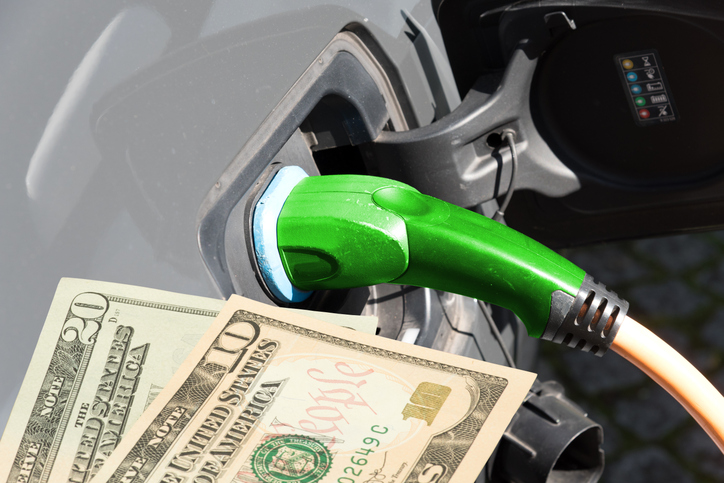Capitol Weekly welcomes Opinions on California public policy or politics. Please read our guidelines for opinion pieces before submitting an Op-Ed.
OPINION – Sept. 30 was the last day of the generous, sales-boosting federal subsidies for electric-vehicle purchases. It was also the final day that EVs could access carpool lanes with only the driver in the car.
For years, various low- and zero-emission automobiles have been the darlings of policymakers, such as Gov. Gavin Newsom, former Gov. Jerry Brown, a host of Sacramento lawmakers, activists and consumers who felt the need to show off their green bona fides. To the astonishment of no one, they became particularly popular in California. But now a curiosity arises: How will their popularity fare without special government treatment?
Up until Oct. 1, buyers were eligible for a federal $7,500 tax credit for new EVs and plug-in hybrids and up to $4,000 for used EVs and plug-ins. The subsidy was wiped out by the One Big Beautiful Bill signed by President Donald Trump on July 4. “Experts,” the media tell us, are warning that sales will “crater.”
Karl Brauer, executive analyst with iSeeCars.com, told the Detroit Free Press that after summer’s “rush to the dealership to take advantage of these incentives” that “there’ll be almost no buyers” in the next three to six months.
“The consumer is going to think, ‘I don’t get $7,500 off the car and it already is priced more than a gasoline vehicle … and it loses range in cold weather so, why am I buying this car?’ ” Brauer said.
A Cars.com survey taken in September found that 78% of “EV and plug-in hybrid shoppers” say the tax incentive “plays a major or contributing role in their decision.” Ford expects that demand for EVs will collapse by in half in October.
California had its own incentive structure. But it, too, has expired.
Maybe policymakers were a bit hasty in coercing Californians to adopt putatively “green,” or zero-emission, vehicles.
“We made a big mistake getting hung up on EVs,” says transportation analyst Randal O’Toole. “A thousand cars that get 40 to 60 miles to the gallon can do a lot more to protect the environment than a hundred EVs, especially since most of the electricity used to recharge those EVs comes from burning fossil fuels. If we were going to give people incentives, they should have been incentives to buy vehicles that use less fuel per mile of driving, not incentives to buy a particular technology.”
But then that’s “if we need to do anything at all,” which O’Toole isn’t “convinced that we to do.”
Making EVs and other “clean” cars even less attractive to buyers is the wrap-up of California’s Clean Air Vehicle Decal Program that allowed them to use the carpool lanes. In its early days, it “incited an EV boom, and a slew of societal changes,” says the San Francisco Chronicle.
More than 1 million decals have been issued since California’s program started in 1999. But Congress declined to reauthorize a provision in federal law that has allowed these cars to drive in high-occupancy vehicle lanes for decades. At least two members of California’s congressional delegation are part of an effort to extend the rule to 2031, but so far they’ve been unsuccessful.
Opinions differed when the program was new. Some were convinced that California’s air would be cleaner due to the consumer incentive to buy cars that produced fewer emissions.
But that didn’t happen, says Steve Milloy of Junkscience.com. Increased EV usage might have reduced levels of ozone or particulate matter, “but that is a distinction without any meaning since the air was clean and safe everywhere 20 years ago.”
Others were uneasy that the carpool lanes would eventually jam up with hybrids and EVs – which was a concern from the beginning – and the environmental benefits would never materialize. O’Toole would be among the latter. He says there’s been “no evidence that the air is cleaner because EVs have been free to tie up fast-lane traffic.”
Baruch Feigenbaum, a Reason Foundation transportation analyst, says “there was never a transportation justification for EVs to use HOV lanes,” anyway. “HOV lanes should be about encouraging carpooling, vanpooling, and bus transit usage.”
So again we have public policy intended to manipulate private behavior and hand politically chosen technology an unearned advantage in the marketplace. The lesson that should be learned is that government meddling produces outcomes, some foreseen, some not, that have consequences.
Kerry Jackson is the William Clement Fellow in California Reform at the Pacific Research Institute and co-author of The California Left Coast Survivor’s Guide.
Want to see more stories like this? Sign up for The Roundup,
the free daily newsletter about California politics from the editors of Capitol Weekly.
Stay up to date on the news you need to know.
Sign up below, then look for a confirmation email in your inbox.


